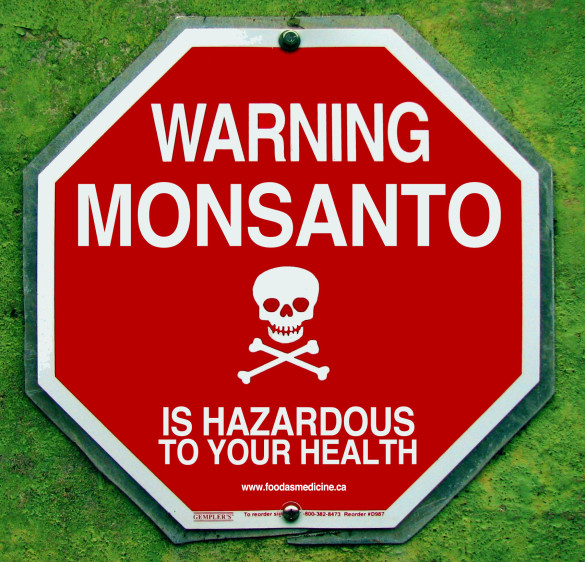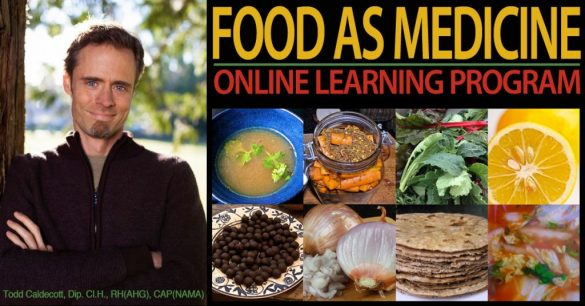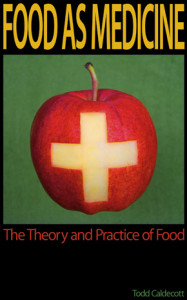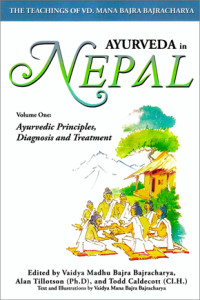A recent paper published in Interdisciplinary Toxicology suggests that Monsanto’s glyphosate may be a direct causative factor in the development of celiac disease. In their review, the authors provide evidence that glyphosate provokes celiac disease through a number of mechanisms:
1. Gut bacteria: Celiac patients often exhibit problems with impaired gut ecology, leading to alterations in bowel function that provoke clinical symptoms. In several animal studies, glyphosate has been shown to be directly toxic to probiotic organisms, facilitating the growth of gut pathogens including Clostridium difficile.
2. Inhibition of cytochrome P450 (CYP): Glyphosate has been shown to inhibit CYP enzymes in the liver, which act to detoxify a variety of poisons acquired from our diet and the environment. Inhibition of CYP not only increases susceptibility to toxins, it also impairs the hydroxylation of vitamin D3. A deficiency of vitamin D3 can be found in as much as 60% of the population that live in northern climates such as Canada, linked to metabolic disorders such as heart disease, and autoimmune disease such as multiple sclerosis. At the same time, glyphosate-induced deficiency of CYP enzymes could lead to increases in retinoic acid, a metabolite of vitamin A that quickly becomes toxic, and may contribute to the pathology of celiac disease. Inhibition of the liver and CYP enzymes by glyphosate could also disrupt the transport of sulfate from the gut to the liver and pancreas, resulting in reduced bile acid production, liver damage, pancreatic inflammation, and damage to the intestinal villi.
3. Nutrient deficiencies: Glyphosate may promote a broad range of nutrient deficiencies commonly seen in celiac disease. Glyphosate has been shown to chelate vital minerals in the GI tract, including iron, molybdenum, and selenium, leading to an increased risk of iron-deficiency anemia, venous thrombosis, and thyroid disorders, all of which are common issues in patients with celiac disease. Other nutrient deficiencies commonly seen in celiac disease also appear to be linked to glyphosate, which disrupts the synthesis of key amino acids in food plants, including tryptophan, tyrosine and methionine, as well as the uptake of iron, magnesium, manganese and calcium.
These are only a few of the points raised by the paper. There is also mention that celiac patients have an increased risk of non-Hodgkin’s lymphoma, the incidence of which has been steadily rising since glyphosate was first introduced in the 1970s. And in a similar fashion, the authors provide a chart showing that the incidence of celiac disease has risen and decreased in direct proportion to glyphosate use, possibly explaining what appears to be the sudden phenomena of widespread gluten intolerance.
 So what do I think of the paper? What is immediately striking is that some of the arguments are little more than conjectures, and hence are subject to a great deal of interpretation. It doesn’t help that neither of the authors are medical practitioners nor established experts in the field, and so doubts will be raised about their paper, particularly because the journal that published it, Interdisciplinary Toxicology, isn’t what I would call a mainstream publication. As such, the conclusions of the authors need to be taken with a grain of salt, realizing that the research doesn’t point so much to a smoking gun, as it provides some thought-provoking ideas that needs follow-up from other researchers.
So what do I think of the paper? What is immediately striking is that some of the arguments are little more than conjectures, and hence are subject to a great deal of interpretation. It doesn’t help that neither of the authors are medical practitioners nor established experts in the field, and so doubts will be raised about their paper, particularly because the journal that published it, Interdisciplinary Toxicology, isn’t what I would call a mainstream publication. As such, the conclusions of the authors need to be taken with a grain of salt, realizing that the research doesn’t point so much to a smoking gun, as it provides some thought-provoking ideas that needs follow-up from other researchers.
I am no fan of Monsanto, a huge multinational conglomerate that time and again has been found guilty of the agricultural equivalent of piracy. But do I think that Monsanto’s glyphosate is the cause of celiac disease? Perhaps… this review seems rather adamant, and I worry about having too myopic of a focus. We often use terms like “cause” in an exclusive way, not fully comprehending that disease, like life, is multifactoral. Thus while glyphosate could contribute to the incidence of celiac disease and gluten intolerance, there are other explanations as well, apart from the inherent toxicity of this storage protein.
One under-explored mechanism I discuss in Food As Medicine is the inherent toxicity of ALL seeds – essentially – because seeds contain a variety of toxins to discourage predation. Think about it: seeds are little babies, the future of the species, and would any mother send their children off into the world without some kind of protection? Nope – which is why seeds contain a hard waxy coating and are impregnated with a plethora chemicals that are inherently toxic, or do things like inhibit digestion and absorption. There are many many examples of these constituents, including toxic storage proteins, lectins, phytic acid, and non-protein amino acids. Humans are the only mammals to selectively eat and attempt to digest small seeds. To be sure: a cow or a horse may swallow seeds while grazing, but most of the seeds are eliminated undigested in the animal’s stool. This is all part of the dalliance between plants and animals for millions of years, and the plants’ grand design to promote seed distribution.
With the advent of the agricultural revolution 9000 years ago, humans began to selectively eat seeds that we had never eaten before, in large quantities and on a chronic basis. And in so doing, the archeological record shows that our ancestors experienced a dramatic decline in health and longevity, from a life expectancy of around 54 in hunter-gatherers, to around 20 in neolithic farmers. Commensurate with this decrease in longevity was a reduction both body mass and height, as well as an increase in infectious disease, infant mortality, increase in iron deficiency anemia, osteomalacia, dental caries and enamel defects (Cordain 1999).
The basic signs and symptoms of celiac disease have been around for a very long time. In the agrarian society of ancient India, a disease called grahani was described in the texts of Ayurveda, characterized by digestive weakness, chronic diarrhea and weight loss. In ancient Greece, the physician Aretaeus of Cappadocia described a condition called ‘koiliakos’ that resembles celiac disease, bolstered by archeological evidence that celiac disease was found in the Mediterranean (Gasbarrini et al 2012). More recently, a disease called pellagra that has a very similar progression to celiac disease ravaged the south-eastern United states for almost a hundred years, before the cause was determined to be improperly processed corn. Like our experiment with pellagra in the late 19th century, the spectre of widespread gluten intolerance has only arisen since we abandoned traditional methods of food preparation, such as the fermentation of wheat. Similar to the nixtamalization of corn, which prevents pellagra, fermenting wheat not only hydrolyzes gluten into harmless amino acids, but along with cooking, helps to denature the many anti-nutrient factors that have interfere with digestion and absorption. Traditional methods of food preparation such as fermentation have demonstrated their merit in clinical research, showing that when wheat is properly fermented, it can be safely given to celiacs without causing any clinical symptoms (Di Cagno et al 2004). I believe that once we restore these traditional methods of food processing, the incidence of gluten intolerance that has steadily increased over these last few generations will begin to decline. However, as this paper illustrates, there may be other factors in celiac disease, and if the suggestions of the authors prove true, it should be even more incentive to governments to ban the use of glyphosate.
References
Cordain L. 1999. Cereal grains: humanity’s double-edged sword. World Rev Nutr Diet. 84:19-73.
Di Cagno R. et al. 2004. Sourdough bread made from wheat and nontoxic flours and started with selected lactobacilli is tolerated in celiac sprue patients. Appl Environ Microbiol. 70(2):1088-96.
Gasbarrini G et al. 2012. Origin of celiac disease: how old are predisposing haplotypes? World J Gastroenterol. 18(37):5300-4.







Hi Todd, You seem to be taking the Samsel/Seneff claims at face value. There are probably only a handful of people on earth who actually read the paper all the way through, let alone checked to see if the “references” actually supported the wild claims. S/S seem to be incapable of citing all the scientific literature that would refute their arguments: this is either ignorant or dishonest. They seem to be oblivious of the fact that the actual levels of exposure to traces of glyphosate are thousands of times lower than the hypothetical mechanisms they propose. “The dose makes the poison”!
This has nothing to do with Monsanto, so please don’t put up manipulative, scary images. It’s about a breakdown of the peer-review process—in this case, an obscure Slovakian journal in which all five editors work in the same Institute. Half the editor-in-chief’s papers appear in this “journal”.
I have worked intensively on gluten and celiac disease for over three years, and feel insulted by this blatant propaganda. A more detailed critique can be found at:
http://ultimateglutenfree.com/2014/02/does-glyphosate-cause-celiac-disease-actually-no/
Thanks for writing in. I did read the entire paper, but didn’t check the citations. I did, however, express my doubts about the paper, and what I think is the real issue behind this epidemic of intolerance. In your critique of Samsel/Seneff paper, you need to make it substantive, otherwise it seems more like an ad hominem attack.
Have you seen a more recent paper by Mesnage et al which suggests that the toxicity of gylphosate can be attributed not just to the active ingredient, but to the entire formulation itself (which is marketed as “glyphosate”). This seems to undermine your statement that Samsel/Seneff inflated the numbers:
“Ethoxylated adjuvants found in glyphosate-based herbicides were up to 10,000 times more toxic than the so-called active AP glyphosate [1] and are better candidates for secondary side effects. This may explain in vivo long-term toxicity from 0.1 ppb of the formulation and other toxicities that were not explained by a consideration of glyphosate alone [2–5]. These adjuvants also have serious consequences to the health of humans and rats in acute exposures [6, 7]. These findings prompted us to investigate the presence of similar toxic molecules in other classes of pesticides.”
http://www.hindawi.com/journals/bmri/2014/179691/
Perhaps this is where some of the confusion is coming from, when testing the active ingredient vs the formulation.
Hi Todd. In the critique that I wrote, I highlighted a number of specific flaws of the Samsel/Seneff article. Did my arguments not make sense?
In addition to the errors I covered, as I pointed out, a more fundamental issue is their apparent lack of curiosity for whether their ideas are actually TRUE!
So, let’s pick one simple claim from Samsel/Seneff—that glyphosate in the diet “chelates” or sequesters the zinc that we need, resulting in deficiency and disease. Anyone with a high-school chemistry education, plus access to the available information, would be able to estimate if this makes sense. In a recently study of 180 people from 18 different European countries, the MAXIMUM level of exposure to glyphosate resulted in about 2 parts per billion glyphosate in their urine. A typical diet would still have roughly 2000-fold excess zinc! As an aside, you probably know that chelating agents are actually used to INCREASE the bioavailability of dietary minerals, e.g. calcium citrate.
Do you believe that Samsel/Seneff lack sufficient knowledge of basic chemistry, or that they are aware of the literature about actual levels of glyphosate exposure? If you care to, you can apply the same logic to their other claims. Samsel/Seneff ignore the fundamental principle that “the dose makes the poison”.
**************
As for the recent Mesnage paper you bring up, yes, that’s interesting, but the Seneff article is about hypothetical role of glyphosate in the development of gluten-related disorders—one topic at a time, please!
**************
Normally, I would not devote so much energy to an obscure paper, but in this case, S/S have the potential for causing real harm by creating an unnecessary fear in the minds of people with real gluten-related problems. Todd, rather than fueling these fears, I encourage you to do your part to counteract them. “First do no harm”.
Peter… as I stated in the post, I expressed some doubts about the paper, and provided my own rationale for the issues behind the ubiquitous issue of not just gluten intolerance, but sensitivity to cereals and legumes generally. But instead of providing a coherent argument with references to substantiate your points, you are just expressing an opinion with a logical fallacy, i.e. an ad hominem attack. I am not sure what you hope to achieve with this approach, but it doesn’t meet with your stated objectives. Besides which, you seem to be tilting at the wrong windmill here, and have not addressed my main point.
Hi Todd- what do you think of the claims made in the paper regarding glyphosate’s disruption of the shikamate pathway in our gut bacteria? This is entirely within the realm of reason since glyphosate is designed to do exactly that same nefarious deed in plants. Without a thriving gut bacteria population, not only celiacs but many other disease will be created, no? BTW, glyphosate is not just used to kill plants, it is used as a dessicant on many crops like beans and wheat to quickly prepare them for market. Of course it and many other pesticides need to be banned.
Also, do you have any sources besides the sourdough reference for more information on the fermentation of grains and seeds? That is very interesting information. Thanks…Salud!